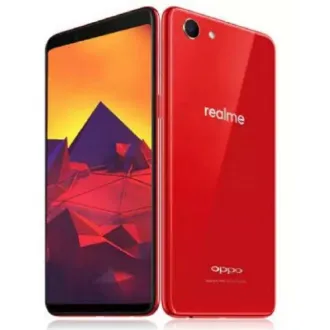Oppo Realme 1 Drivers will help your Windows computer recognize your Android device. Then you can transfer files from computer to Android or even install the stock or custom ROM to your Android device.
Network: Technology: GSM / HSPA / LTE
Launch: Announced: 2018, May
Status: Available. Released 2018, May
Body: Dimensions: 156.5 x 75.2 x 7.8 mm (6.16 x 2.96 x 0.31 in)
Weight: 155 g (5.47 oz)
Build: Glass front (Gorilla Glass 3), plastic back, plastic frame
SIM: Dual SIM (Nano-SIM, dual stand-by)
Display: Type: IPS LCD capacitive touchscreen, 16M colors
Size: 6.0 inches, 92.9 cm2 (~78.9% screen-to-body ratio)
Resolution: 1080 x 2160 pixels, 18:9 ratio (~402 ppi density)
Protection: Corning Gorilla Glass 3
Platform: OS: Android 8.1 (Oreo), upgradable to Android 9.0 (Pie); ColorOS 6
Chipset: Mediatek MT6771 Helio P60 (12 nm)
CPU: Octa-core (4x2.0 GHz Cortex-A73 & 4x2.0 GHz Cortex-A53)
GPU: Mali-G72 MP3
Memory: Card slot: microSDXC (dedicated slot)
Internal: 32GB 3GB RAM, 64GB 4GB RAM, 128GB 6GB RAM
: eMMC 5.1
Main Camera: Single: 13 MP, f/2.2, PDAF
Features: LED flash, HDR, panorama
Video: 1080p@30fps
Selfie camera: Single: 8 MP, f/2.2
Video: 1080p@30fps
Sound: Loudspeaker: Yes
3.5mm jack: Yes
Comms: WLAN: Wi-Fi 802.11 b/g/n, Wi-Fi Direct, hotspot
Bluetooth: 4.2, A2DP, LE
GPS: Yes, with A-GPS
Radio: FM radio
USB: microUSB 2.0, USB On-The-Go
Features: Sensors: Accelerometer, gyro, proximity, compass
Battery: : Non-removable Li-Ion 3410 mAh battery
Misc: Colors: Diamond Black, Solar Red, Moonlight Silver
Models: CPH1859, CPH1861
Price: $ 325.00 / ₹ 10,299
Tests: Performance: AnTuTu: 138524 (v7)
GeekBench: 5741 (v4.4)
GFXBench: 7.5fps (ES 3.1 onscreen)
Display: Contrast ratio: 1209 (nominal), 2.932 (sunlight)
Camera: Photo / Video
Loudspeaker: Voice 64dB / Noise 70dB / Ring 89dB
Audio quality: Noise -89.0dB / Crosstalk -87.3dB
Battery life:
Endurance rating 84h
Step 1 — Download and extract the Android USB Driver to your PC.
Step 2 — Click Start (Windows) -> Control Panel -> Device Manager (Select Device Manager).
Step 3 — On the Device Manager window find and click on computer name to select Add legacy hardware.
Step 4 — Select Next
Step 5 — Selext Install the hardware that I manually select from a list (Advanced), and click the Next
Step 6 — Select Show All Devices afterward click Next button again.
Step 7 — Click the Have Disk button.
Step 8 — Click Browse button to find the extracted Android ADB Driver -> android_winusb.inf and click on Open.
Step 9 — Click OK.
Step 10 — Now select the Android ADB Interface -> click Next button.
Step 11 — Click Next button again.
Step 12 — Windows Security box will appear, to confirm whether you really want to install the Android USB Driver, so just choose the Install this driver software anyway.
Step 13 — Once you clicked the Finish button, then repeat from step 2 to choose Android Composite ADB Interface.
Step 14 - Done.
